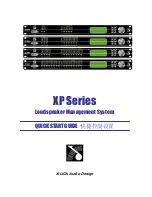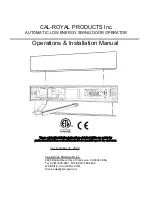
Manual 0-2972
4-3
TROUBLESHOOTING
3. Excessive Dross Formation
a. Cutting speed too slow
b. Torch standoff too high from workpiece
c. Worn torch parts
d. Improper cutting current
e. Non-Genuine Thermal Dynamics parts used
4. Short Torch Parts Life
a. Moisture in air source
b. Exceeding system capability (material too thick)
c. Excessive pilot arc time
d. Gas pressure too low
e. Improperly assembled torch
f.
Incorrect torch parts for the operation
g. Non-Genuine Thermal Dynamics parts used
4.05 Troubleshooting Guide -
General Information
WARNING
There are extremely dangerous voltage and power
levels present inside this unit. Do not attempt to
diagnose or repair unless you have had training in
power electronics measurement and troubleshoot-
ing techniques.
A. General Information
This Section covers advanced troubleshooting, which re-
quires power supply disassembly and live measurements.
Advanced troubleshooting and repair of this unit is a pro-
cess which should be undertaken only by those familiar
with high voltage high power electronic equipment.
If major complex subassemblies are faulty, the faulty sub-
assembly must be returned for repair.
NOTE
Follow all instructions as listed and complete each
in the order presented.
The troubleshooting guide has subsections as follows:
Section 4.06 - Circuit Fault Isolation
Section 4.07 - Main Input and Internal Power Prob-
lems
Section 4.08 - Pilot Arc Problems
Section 4.09 - Main Arc Problems
Section 4.10 - Test Procedures
Subsection 4.10 includes specific test procedures and in-
dicator status identification tables. The subsection is ref-
erenced by the troubleshooting guide for the specific test
to be performed. The Power Supply is available for sev-
eral input voltages. The technician must select the proper
test points and measurements for the Power Supply being
serviced.
B. How to Use the Troubleshooting Guide
The following information is a guide to help the Service
Technician determine the most likely causes for various
symptoms. This guide is set up in the following manner:
1. Perform operational check(s) on the equipment to iso-
late problem to possible circuit(s) per Subsection 4.06,
Circuit Fault Isolation.
2. Determine symptom and isolate to defective assem-
bly using the following format:
X. Symptom (Bold Type)
Any Special Instructions (Text Type)
1. Cause (Italic Type)
a. Check/Remedy (Text Type)
3. Locate your
symptom
in the appropriate Subsection.
4. Check the
causes
(easiest listed first) for the
symptom
.
5. Check the remedies listed for each cause.
6. Repair as needed being sure to verify that unit is fully
operational after any repairs.
NOTES
Many signals are transferred between Printed Cir-
cuit Board Assemblies on Cables. If these cables
become faulty they can then cause various prob-
lems.
Do not
forget about these cables when
troubleshooting.
While troubleshooting visually inspect the internal
components for signs of overheating, fractures and
damage.
















































